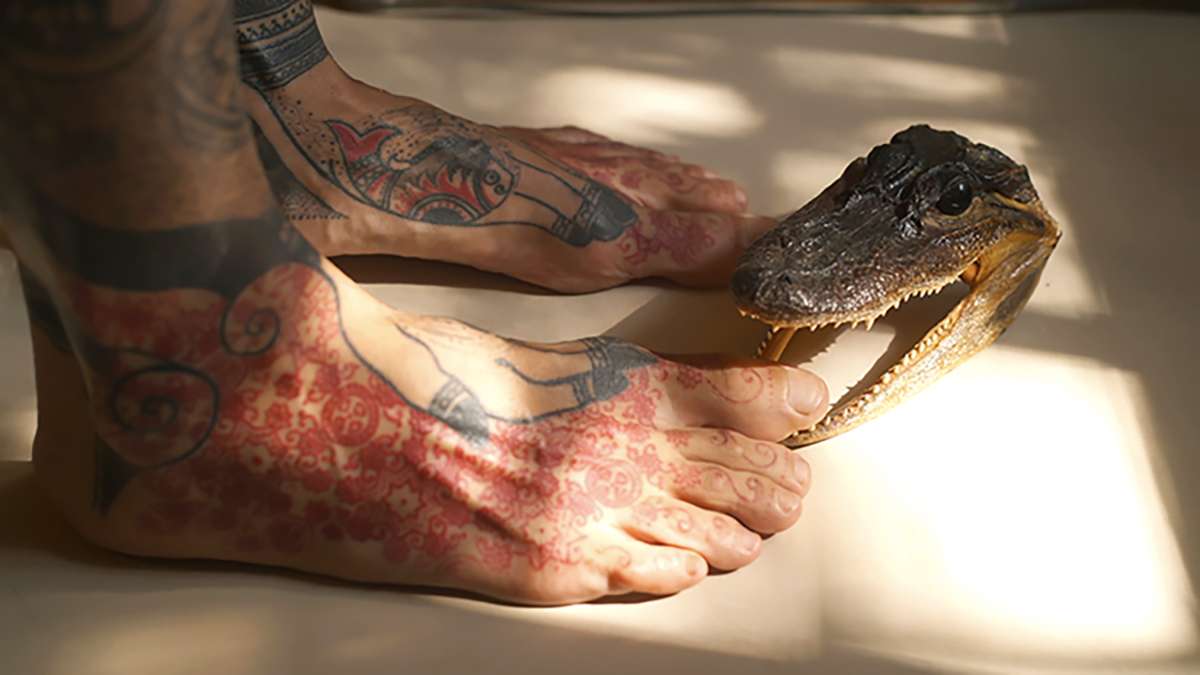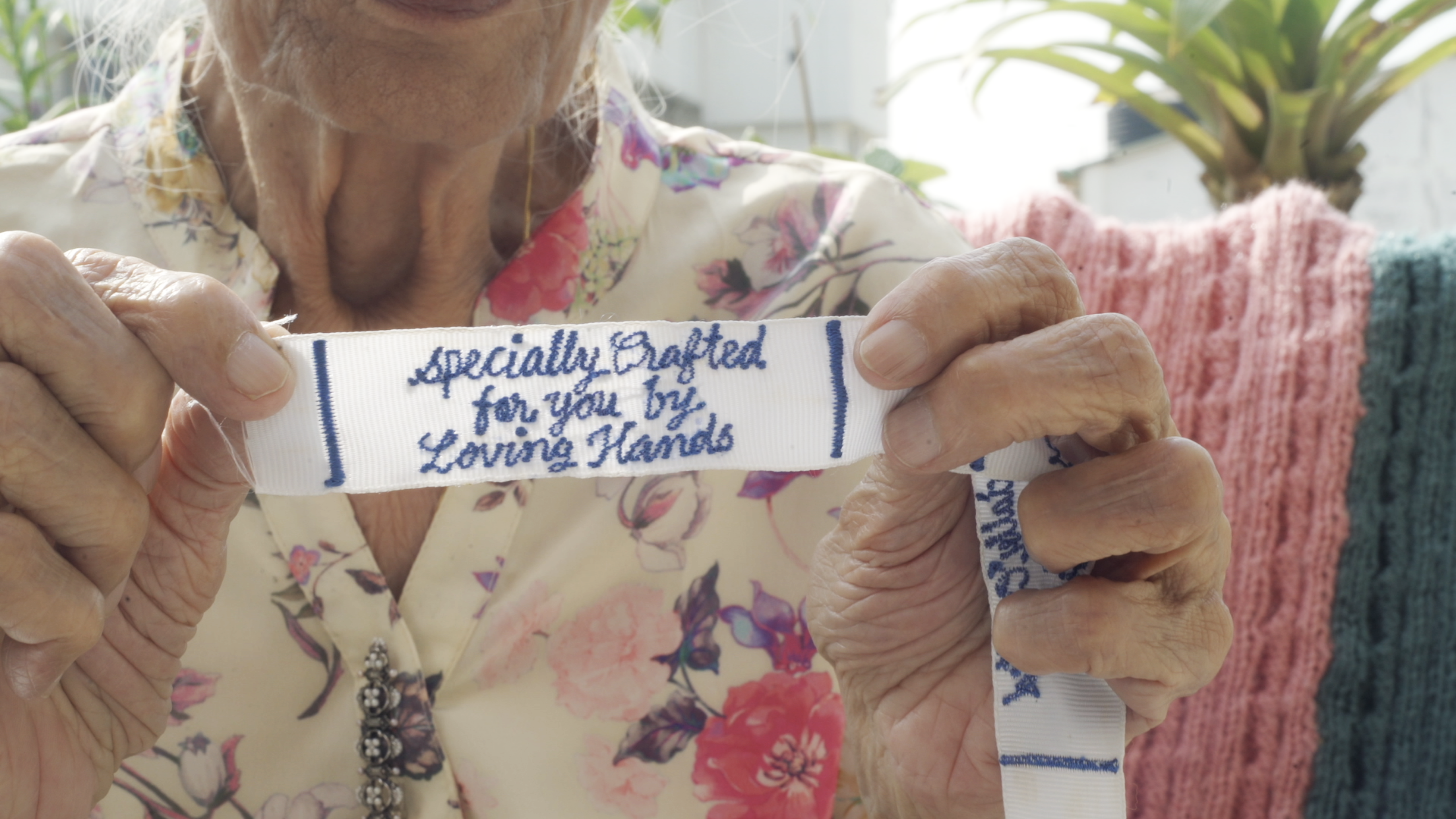Around 15 minutes into Sapna Bhavnani’s Sindhustan, Dr. Sundari Keswani confides in the interviewer how much she misses the carefree days of living in Shikarpur, Sindh. When the interviewer asks whether or not they miss Shikarpur, she promptly responds:
“Yes! Shikarpur, main place…river used to flow. It still must be flowing, no?”
For me, these words and the gleam of nostalgic longing in Dr. Keswani’s eyes encapsulate the essence of Sindhustan (2019), an hour-long feature film directed by Sapna Moti Bhavnani, a celebrity stylist turned filmmaker. This film, akin to Sapna’s personal diary, is a playful exploration of disjointed scenes that somehow coalesce into an archive of an entire community’s history through food, personal memories, culture, and musical homages. This archive is etched on Sapna’s skin in the form of tattoos, a cartographic endeavor to remap the partition and their socio-cultural identity. Sindhustan is so effortlessly fluid and fragmented that it challenges the audience to question the existence of imaginary borders and their geo-political implications.
When India was partitioned in the wake of its independence, among the several people who migrated to independent India was a huge community of Sindhis. Now stranded without a land to call their own, the community has been forced to adapt to the Indian culture while their intrinsic cultural identity slowly erodes away with each passing generation. Sindhustan is Sapna Moti Bhavnani’s effort to capture how one of the largest migrations in our cultural history has shaped the Sindhi identity. It is a lesson in history but keeps the textbook tropes of portraying partition out of its frame. The storytelling in this film is fractured; each of the interviews she conducts is overlapped with images of ruins, her own tattooed skin, and videos of the world that she has taken. They all come together like a jigsaw puzzle, as long as you are patient enough to wait it out till the end of the film, to convey how the Sindhi identity – Sapna’s own identity – is a sensory overload of sounds, sights, stories, smells, and music. The best thing about this film is possibly the fact that Sapna isn’t watering down the horrors of the partition. She shows us a fish out of water, struggling to survive on land until someone helps it back to its roots – a waterbody. If the Sindhi identity is this fish on the land, Sapna’s Sindhustan (2019) is an effort to puncture the cultural memory of the community with a call to re-learn their history and embrace their roots.
When Sapna is denied a visa to visit Sindh, she embarks on a deeply personal journey to inscribe these stories on her skin, hoping to reconnect with the roots of her cultural identity through her own body. The process of tattooing becomes a poignant performance in the film, serving as a powerful medium of storytelling that intricately weaves the narrative together. Moreover, tattooing was a cultural practice among South Asians during the partition, a means of survival and a way to assert one’s existence in the world despite the displacement. Her tattoos become a testament to everything – from the figurines of the seven times indestructible cities of Mohenjodaro to the stories of partition – that forms the foundation of a post-partition Sindhi identity. Her words, “My legs carry the stories of their journey and my feet the lack of our roots,” may be haunting in their implications, but this makes her skin a visceral archive for the oral stories of partition. One may also interpret Sapna’s deliberate choice of tattooing her skin as a conscious effort to merge the past and the present into a seamless, congruent whole, her body becoming a utopian borderless nation, a representation of the Sindh she envisions in her mind.

The making of the Sindhi curry is almost as important to the narration of the film as Sapna’s stories. Sindhustan, that way, also doubles up as a recipe book for those interested. We are led inside a Sindhi kitchen and taught to use the pressure cooker in the right way and the gram flour with the jeera in the tadka before the dal goes in. In fact, I found myself expecting to get a whiff of the curry every time we were in this kitchen or around the dining table with the lavish display of a mean. A community’s identity is also derived from the food it shares, and cooking Sindhi curry is one way for the community to touch base with its roots. When Sapna’s aunt sings “mere sapno ki rani kab aayegi tu…” towards the end of the film, one can almost read this as the Bombay-fication of the dreams of uniting with the native land that lies in a now-foreign country.
Sindhustan (2019) combines the past and the present, the good and bad stories, the cuisine and the music. In the process, it becomes a modern-day painting that seeks to become the roots of the Sindhi community. It makes you want to dig deep into your roots and reclaim what has been sacrificed to your community’s shared memory now to situate your identity better in the sifting sands of time and place.





![Kim Ji-Young, Born 1982 [2020] ‘NYAFF’ Review: A Delightful narrative in a sweet, somber film](https://79468c92.delivery.rocketcdn.me/wp-content/uploads/2020/09/KIM-JI-YOUNG-MOVIE-REVIEW-highonfilms-1-768x515.jpg)
![Hannah Ha Ha [2022]: ‘Slamdance’ Review : A quietly observant film on living off the grid never really takes off](https://79468c92.delivery.rocketcdn.me/wp-content/uploads/2022/01/Hannah-Ha-Ha-Slamdance-2-768x432.jpg)


![Atomic Blonde [2017]: Charlize Theron’s Badass Performance Is Its Only Saving Grace](https://79468c92.delivery.rocketcdn.me/wp-content/uploads/2017/11/atomic-blonde-5877-768x314.jpg)
